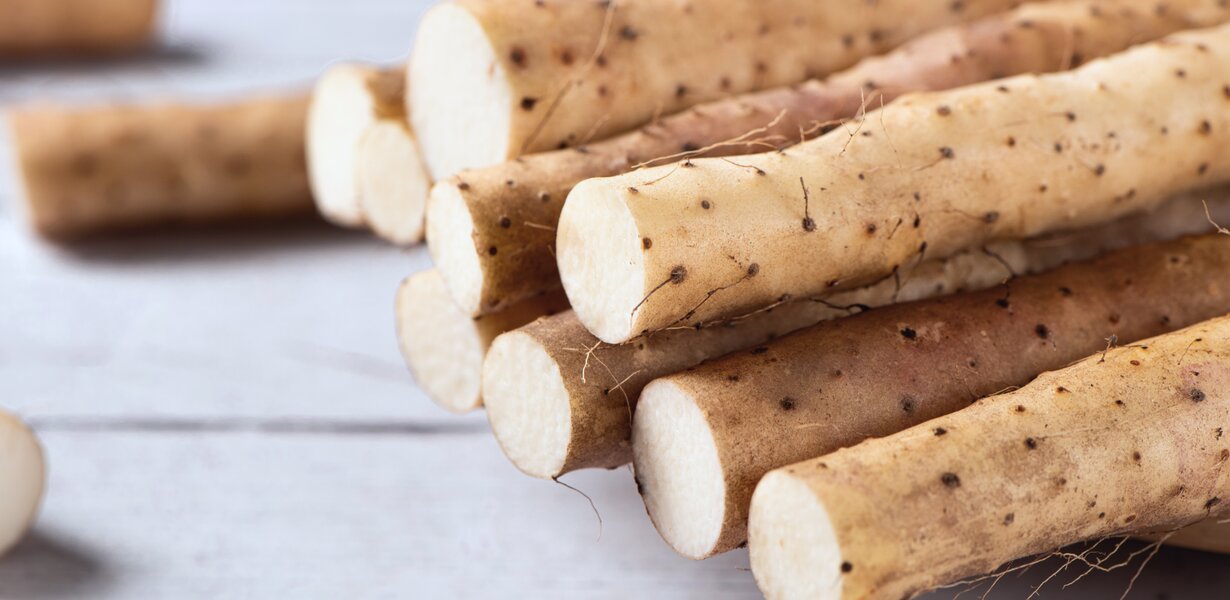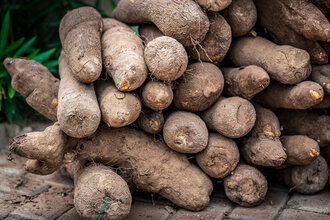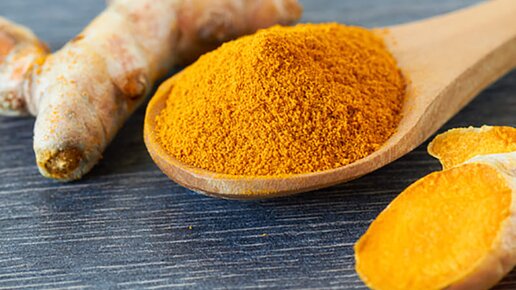From Asia to Africa and South America, yams have always been a valued staple food in many tropical countries. And in our part of the world? The tuber is also becoming increasingly popular here – but primarily as a remedy. This is hardly surprising, as yams contain not only fibre and vitamins, but also a very special substance. We reveal what this is, why wild yam extract is now considered an insider tip for women due to its effects, and what else there is to know about this exciting root.
What is wild yam?
Let's start with the most important facts: Wild yam (Dioscorea villosa) – also known as wild yam – is a twining climbing plant with heart-shaped leaves that is mainly found in the tropics and subtropics of Asia, Africa and Central and South America. There, it thrives on the edges of lakes, watercourses and swamps, but it also grows in forests and bushes.
What's more, wild yams like lofty heights – they can grow up to 7 metres tall. However, the valuable ingredients that have earned it its good reputation are not found in the crown, but further down: in the root. This is because the herbaceous crop forms a thick tuber underground, which serves as a storage organ and also contains valuable substances.

What ingredients and properties does yam have?
There are several hundred different types of yams worldwide, most of which are primarily cultivated as food crops. But be careful: many of them are poisonous when raw! When cooked, the sweet to slightly bitter yam root tastes similar to sweet potatoes or chestnuts. The nutritional spectrum also varies slightly depending on the variety and origin. What most tubers have in common is a high starch content. In addition to fibre, they also contain essential micronutrients such as vitamin C, B vitamins, potassium, zinc and copper.
But that's not all: yams also contain a very special substance – the plant compound diosgenin, a phytohormone. Phytohormones are plant messenger substances that can be similar to our body's own hormones. Diosgenin, for example, is largely identical to the sex hormone progesterone. This regulates processes in your body related to your cycle or pregnancy. The advantage of phytohormones is that they enable your body to stimulate its own production of the corresponding hormone, in this case progesterone. This is why yams have long been considered a medicinal plant by indigenous peoples, particularly for the special needs of the female body. But they are also becoming increasingly popular in Europe.
Let's take a closer look at the effects of yam root during the menopause, when trying to conceive or for menstrual cramps.
The yam root and its effects
Due to its special composition of vital substances and the plant compound diosgenin, yam root is particularly useful for the following complaints:
- Menopause: During menopause, life often feels like a wild, unpredictable rollercoaster ride for many women – ups and downs manifest themselves in hot flushes or restlessness. In addition, progesterone levels drop. Balance is the gentle magic remedy in this phase of life. And this is where yam root can play to its strengths: as the diosgenin it contains is similar to the sex hormone progesterone, the tuber helps to better cope with the effects of menopause.
- Menstrual & PMS symptoms: Yam root can also provide relief from menstrual cramps, mood swings or hormonal imbalances. It is therefore also used when there is an oestrogen dominance that leads to PMS symptoms.
- Desire to have children: If a woman's desire to have children remains unfulfilled, hormones are often the reason. Those affected often have too little progesterone, which leads to menstruation despite a fertilised egg. Yam root, which is rich in phytohormones, can also help in this case.
Since 100 g of yam root covers about 10% of your daily vitamin C requirement and 50% of your daily potassium requirement, the tuber is also suitable as an immune system booster and helps you with colds and inflammation.
Due to its minerals, yams also have an antispasmodic and digestive effect, which means you can use them to treat abdominal pain and an upset stomach.
In addition, it can help you cope better with stress, be more balanced and calm inner turmoil in no time. Yam root therefore also has a special effect that can benefit your mental health.
Yams: Possible side effects
As yam root is a natural product, side effects are relatively rare. The most common include digestive problems and skin rashes, and liver problems have also been observed at high doses.
However, people with hormone-dependent diseases or those taking hormone preparations should always seek medical advice before taking yam root. Pregnant women and women who are breastfeeding should also refrain from taking yam for safety reasons, as there are still too few studies on this topic.
Eating yams: preparation and consumption
If you want to do something good for your body, you can integrate yams directly into your diet – the tubers are mainly available in Asian markets. The food is cooked like a potato and can also be fried or baked. It can also be used to make tea.
Yam extract: intake and dosage
Yams are also available in capsules and powders. But be careful: the diosgenin content can vary greatly! It is best to take yam root extract with meals and with plenty of liquid. Good results have been achieved with 200 mg of yam root extract (32 mg diosgenin) per day – or as recommended by your doctor or therapist.
What does BIOGENA look for in its yam raw material?
Wild yams from wild collections can vary in quality. That is why BIOGENA uses wild yams from cultivated sources for its yam raw material. The root extract is standardised to 16% diosgenin and undergoes strict, comprehensive quality testing, including by independent third parties. Thoroughly tested, you can be sure that our preparation is available only in the usual high BIOGENA quality and thus provides the necessary balance.
Yams in BIOGENA products
Frequently asked questions about yams
Yam root is not considered harmful to the liver, provided you adhere to the recommended dosage. Only excessive consumption can result in digestive and liver problems as well as skin rashes, flatulence, abdominal pain or diarrhoea.
Yes, yam root can indirectly support weight loss. This is due to the fibre it contains, which can provide a longer-lasting feeling of satiety, potentially leading to reduced food intake.
Yam root, also known as wild yam, can alleviate symptoms associated with the menopause or menstruation. It is also used to support fertility. As it has anti-inflammatory and antispasmodic properties, it can also be beneficial for gastrointestinal complaints, colds or inflammation.
Pregnant women and women who are breastfeeding should refrain from taking yam root products as a precaution, as there is still too little research on this topic. People with hormone-dependent diseases or those taking hormone preparations must also be cautious and seek medical advice. Yam root should never be eaten raw, as it may contain toxic substances.
No, yam root does not contain oestrogen, but it does contain diosgenin, a phytohormone similar to the sex hormone progesterone.
Yam root can have a positive effect on the psyche, mainly due to its hormone-regulating effect. Hormone-related mood swings and other complaints, such as those that occur during the menopause or PMS, can be balanced out with it. The tuber is also said to have a relaxing and calming effect, which can lift the mood and dispel inner restlessness.
Sources
V. Ajdžanović et al. 2017.Diosgenin-caused changes of the adrenal gland histological parameters in a rat model of the menopause. Acta Histochemica, Bd. 119, Nr. 1, S. 48–56, Jan. 2017. https://pubmed.ncbi.nlm.nih.gov/27889068/
K. Lok Wong et al. 2015. A Novel, Stable, Estradiol-Stimulating, Osteogenic Yam Protein with Potential for the Treatment of Menopausal Syndrome, Sci Rep, Bd. 5, Juli 2015. https://pubmed.ncbi.nlm.nih.gov/26160710/
Wu, W. H. et al. 2005. Estrogenic effect of yam ingestion in healthy postmenopausal women. J Am Coll Nutr. 24(4):235-243. https://pubmed.ncbi.nlm.nih.gov/16093400/
Komesaroff, P. A. et al. 2001. Effects of wild yam extraction on menopausal symptoms, lipids and sex hormones in healthy menopausal women. Climacteric. 4(2):144-50. https://pubmed.ncbi.nlm.nih.gov/11428178/
Yen, M. L. et al. 2005. Diosgenin induces hypoxia-inducible factor-1 activation and angiogenesis through estrogen receptor-related phosphatidylinositol 3-kinase/Akt and p38 mitogen-activated protein kinase pathways in osteoblasts. Mol Pharmacol. 68(4):1061-73. https://pubmed.ncbi.nlm.nih.gov/15998873/
Biogena Mikronährstoffcoach. https://www.mikronaehrstoffcoach.com/de/at/mikronaehrstoffe/micronutrient.yams.html, Accessed: Feb. 2021.
Pflanzenforschung.de, Accessed: Feb. 2021.











